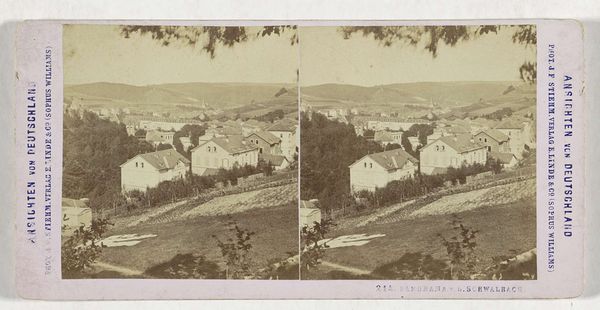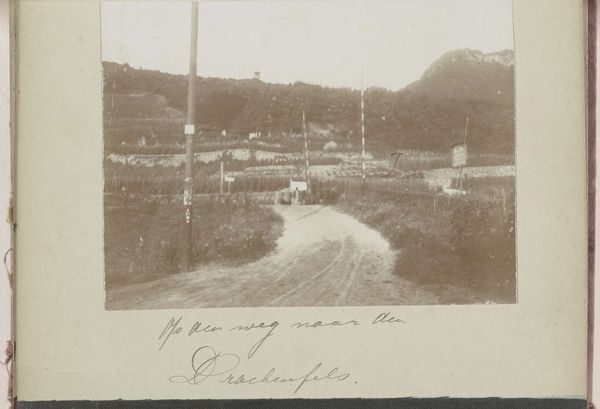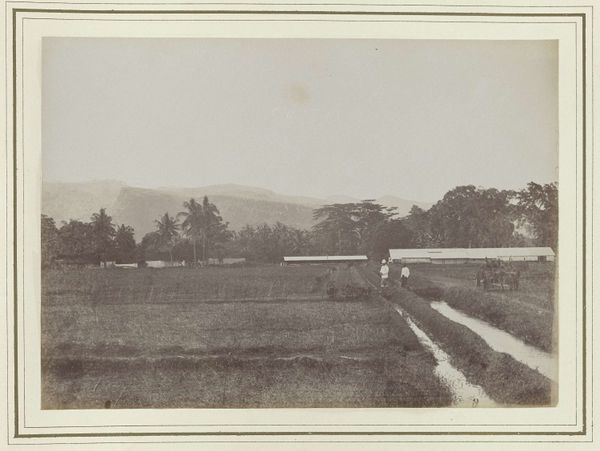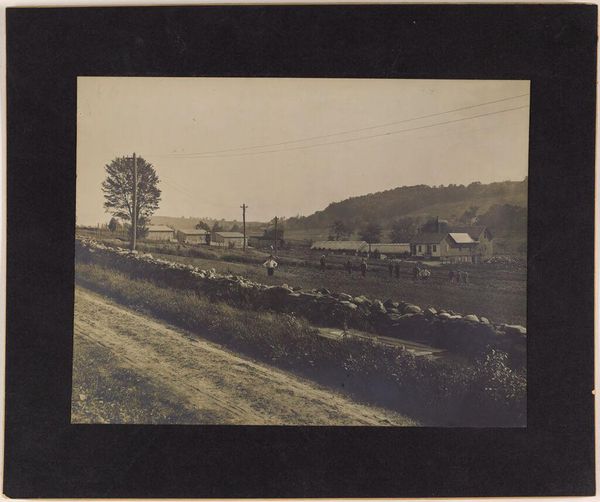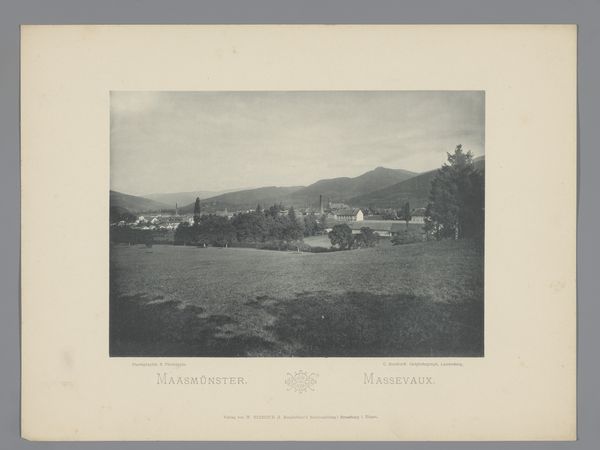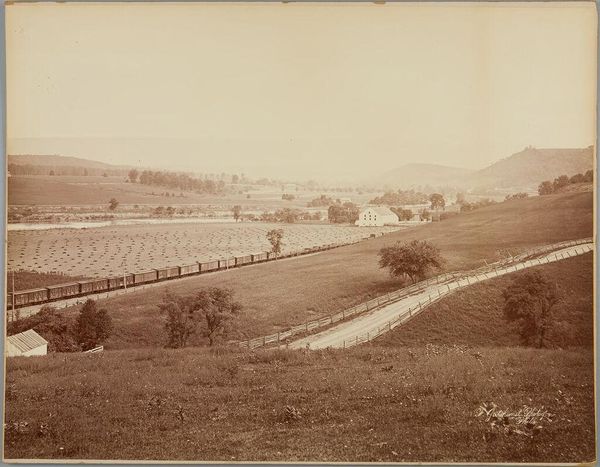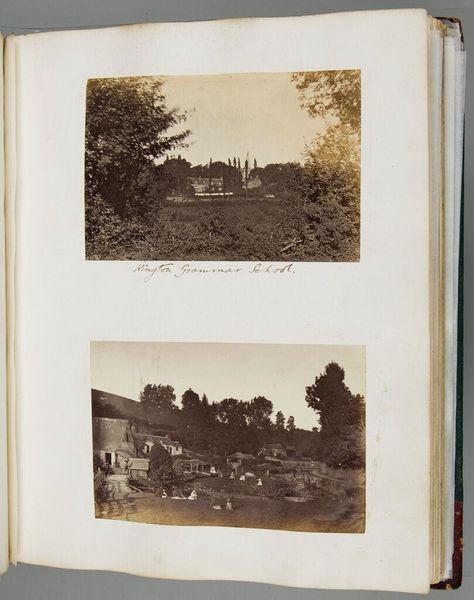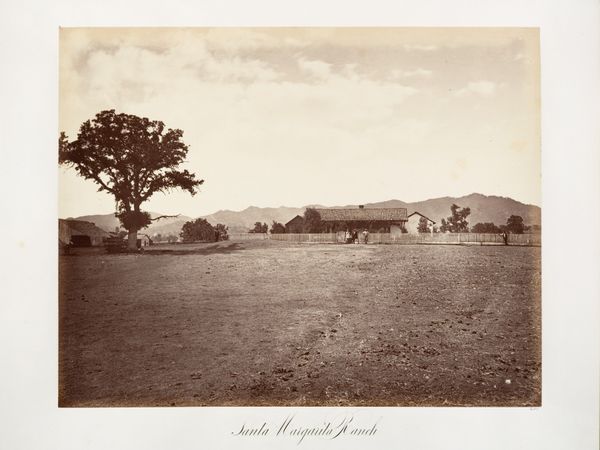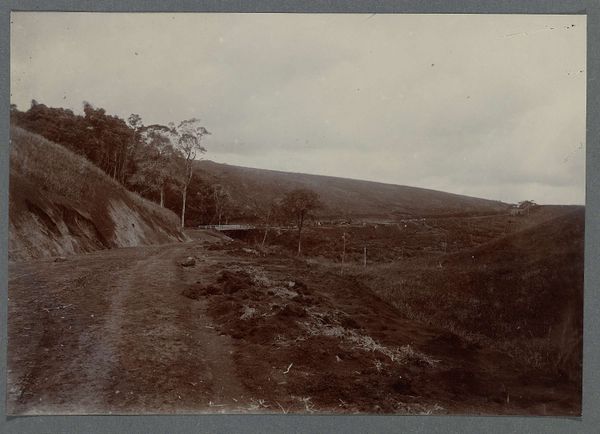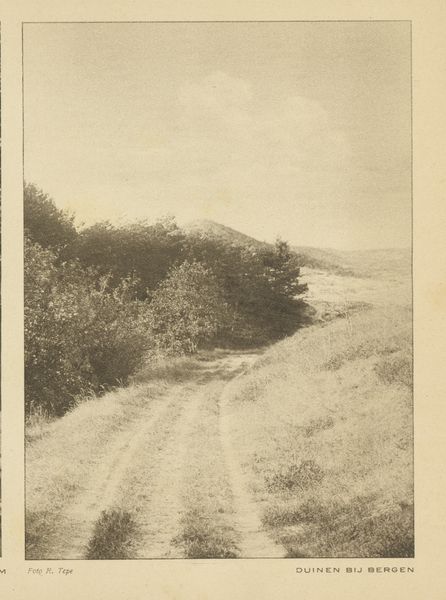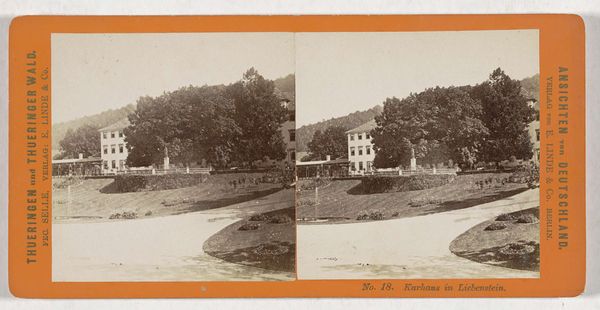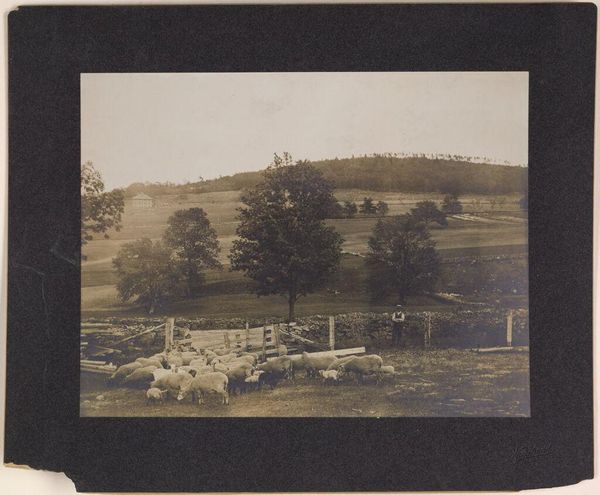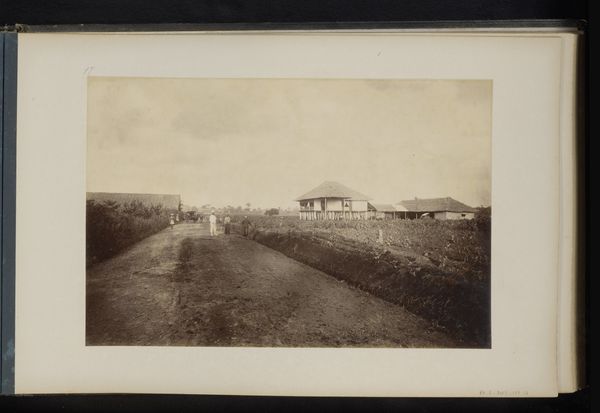
Dorp Troon gezien vanaf Ballast Bank met op de voorgrond grazende koeien 1900
0:00
0:00
photography, gelatin-silver-print
#
pictorialism
#
landscape
#
photography
#
gelatin-silver-print
#
19th century
Dimensions: height 135 mm, width 206 mm
Copyright: Rijks Museum: Open Domain
Editor: This photograph by James Valentine, titled "Dorp Troon gezien vanaf Ballast Bank met op de voorgrond grazende koeien", from around 1900, captures a serene landscape using a gelatin-silver print. The contrast between the grazing cows and the distant town evokes a feeling of rural life giving way to industrial expansion. What strikes you most about this work? Curator: It’s the materiality and process itself that commands my attention. Look closely – a gelatin-silver print. Consider the chemical processes involved, the labor in creating the photographic emulsion, coating the paper. And think about how the photograph itself captures the material reality of a changing landscape, agriculture yielding to the urban sprawl in the background. Are the cows, in a sense, raw material, their pastoral idyll soon to be overtaken by industrial production? Editor: That's a very insightful way to put it. It’s not just about documenting the scenery but also hinting at the transformation and labor embedded in both the making of the image and the landscape. It makes you wonder about the intended audience and the values they held about progress and the use of land. Curator: Exactly. Consider the infrastructure implied – roads, railways – that facilitated the photograph's very existence and circulation. This photograph then isn't just a passive reflection, but an active participant in a network of material exchange. How might the consumption of images like these influence perceptions of progress and land use? Editor: It becomes almost a form of advertising, perhaps romanticizing that shift while ignoring some underlying social or economic effects. I’m beginning to see how focusing on materiality unlocks these layered readings. Curator: Indeed. It prompts us to look beyond the surface beauty and to examine the power relations embedded within the materials and modes of production themselves. This lens lets us appreciate what is revealed, as well as concealed, through choices about material, labour and perspective. Editor: Thanks, that really helps put the work into a broader historical context. I'll never look at old photos the same way!
Comments
No comments
Be the first to comment and join the conversation on the ultimate creative platform.
